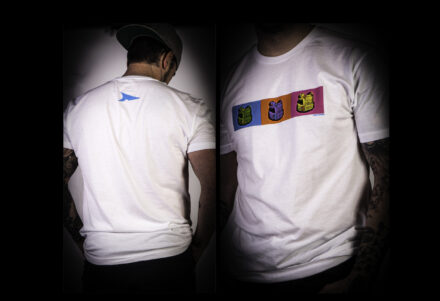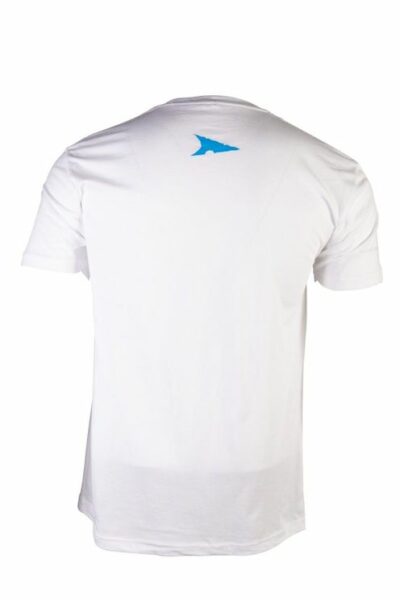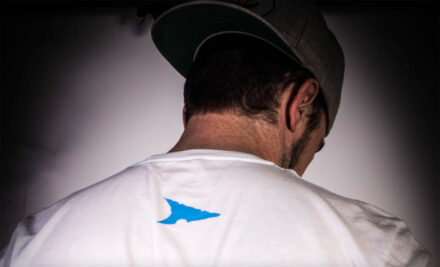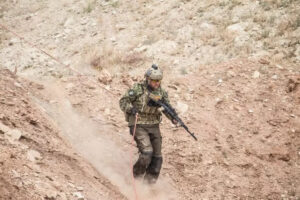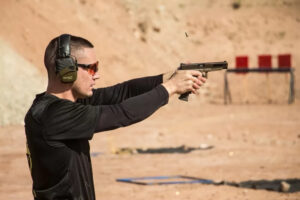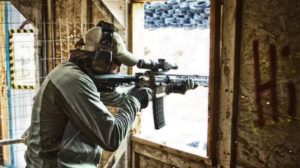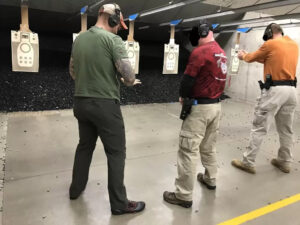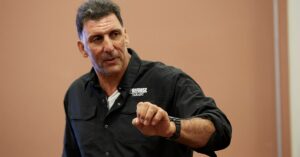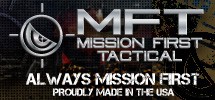If it weren’t for Xbox Gamepass, I’d never have heard of a little game called State of Decay 2. I never heard of the first, and the second looked to be an enjoyable open-world game. Plus, it’s free on Gamepass, so I hopped on it. Never did I expect a game to offer such a unique experience. Not just the game itself, but the guns. As a gun nerd, I geeked out on State of Decay 2.
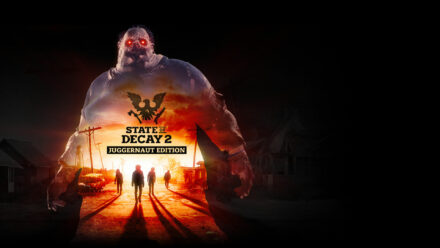
The game features tons of guns and some very interesting gunplay. State of Decay 2 takes the player and tasks them with building a community of survivors. Throughout the game, the player has to kill zombies, make allies, and find and scavenge supplies, vehicles, and guns. It’s deep, can be extremely difficult, and is the Walking Dead game we’ve always wanted. It’s a free-roaming game with a vast open-world and several selectable maps.
Pick a map, roll the nice to get characters, and jump on into a very addictive game.
State of Decay 2 – The Gameplay
State of Decay 2 is an open world, community building, third-person game. You can swap between a multitude of characters as you play. Each character comes with a variety of skills that affect combat, navigation, crafting, and more. It’s a very deep game with a lot of minutiae and a cult of players who are far more educated than I about the game. I’ve spent tens of hours playing it, and I still can’t explain the whole thing.
You start with a small community and steadily build it. You move from sanctuary to sanctuary and build your community with a variety of different upgrades. We can have infirmaries, mechanic shops, armories, and more. Each member of your community is a playable character, and each member can bring different skills to your community. You’ll need to constantly scavenge supplies like fuel, food, ammo, and more.
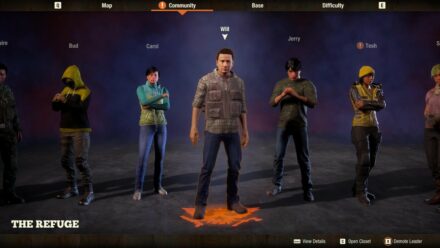
All of your survivors are playable characters with different skills
You’ll have to balance the strengths of your characters as well as their fatigue and health. When a character is wounded, tired, or bit, you’ll need to take them back to the community to rest and switch out. You can move between different paths through the game that offers you different missions, challenges, and outcomes.
Throughout the entire game, you’ll need to balance your scavenging with combat. Combat involves either guns or melee weapons. You have broad availability of both. Today we are going to talk all about the guns of State of Decay 2.
The Gunplay
How many guns are there? I don’t know…all of them might be the best answer. There are dozens of guns, and I mean dozens of them. You can use the ultra-modern Maxim 9mm integrally suppressed handgun to the old-school cool Remington 1875. Maybe you are a scattergun guy like me, and you want an AA-12 or a Winchester 1897 Trench gun. Well, you can use either.
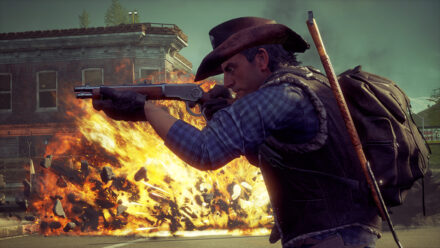
Mare’s Leg? Sure, we got em!
Guns have been added throughout the lifespan of the game. We even get guns that aren’t ‘mainstream’ outside of the world of guns, like the CMMG Banshee, the KelTec Sub 2000, and the Colt Monitor.
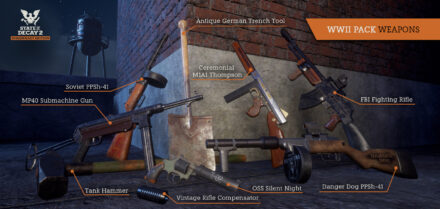
Weapon drops bring us everything, including WW2 guns.
There are tons of guns that fall into various classes. You seemingly get everything outside of crew-served guns. I can’t help but think someone at the State of Decay 2 studio is a gun nerd. Not just because of the gun selection but due to the depth.
Select fire weapons can swap between full auto, burst, or semi, depending on the gun. Guns will eventually wear out, and when they wear out, they begin malfunctioning and eventually just break completely.
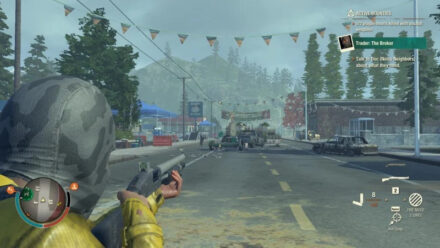
Don’t forget the shotguns (Courtesy of IMFDB)
Characters build skills with their firearms by using them. The more shoot, the better you’ll be at it. Some characters have unique traits that they come packaged with to make them better shots, and as your skill grows with guns, you can pick between different advantages. Some skills paths and advantages affect reloading, recoil control, and accuracy.
Noise and Size Matter
Throughout the game, noise is always a concern. If you’re loud, you’ll attract the attention of zombies, which will converge on your location. Breaking windows, kicking open doors, vehicles, and obviously, guns will affect your noise level. Different guns have different levels of quietness.
They get this mostly on point. A .22LR rifle is a fair bit quieter than a full-powered anti-material rifle. When noise becomes a big issue, you can toss on a suppressor. Suppressors come in different tiers, with the lowest being a fuel filter and the best being an Osprey 9. Suppressors can be attached and removed, but not all guns can use suppressors.
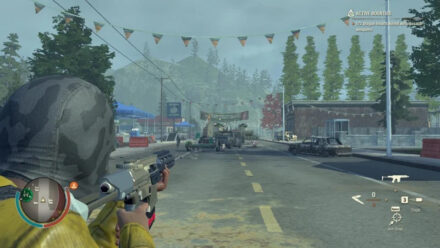
The Honey Badger Helps keep things quiet (Courtesy IMFDB)
Realistically most revolvers can’t be suppressed, but realistically you can get a silenced Nagant revolver. Little touches like that make a difference that makes State of Decay 2 stand out.
Throughout the game, you’ll need to manage your inventory. You only have so much room and weight to balance. In some situations taking a suppressed 22LR rifle makes more sense than taking a AR 15. The 22LR rifle is lighter and quieter, and so is the ammo you have to carry for it. Rifle ammo weighs more, so keep that in mind.
The Little Details
A few of the little things worth noting is that when you reload a partially empty magazine, the gun keeps a +1 in the tube. That’s a neat little feature I didn’t notice for the longest time. Also, most of the time, full auto is useless. Headshots matter and zombies can’t be suppressed. Firing full auto can be tough to control and inaccurate.
The only time full auto is handy in State of Decay 2 is when facing off against human threats and juggernauts. Juggernauts don’t go down with a single headshot, so spraying them can be a viable strategy. Guns can be upgraded with mods.
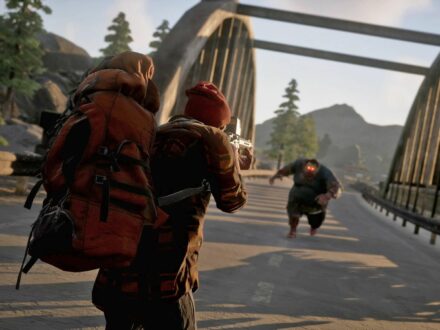
Full auto is for Juggernauts only
Mods, of course, are suppressors, as well as chokes for shotguns, flash suppressors, and compensators. They alter how the gun handles, and other guns can be found with upgrades, like optics that can’t be removed but increase your zoom range.
A weapon can be fixed at workshops via spare parts, and ammo can be reloaded and crafted as well. Speaking of ammo, the ammo comes in different calibers and types. However, it’s not super accurate. Some ammo types are grouped together, like different types of rifle ammo are all grouped together. 5.45 guns just shoot 5.56, and the M1918 BAR uses the same 7.62 ammo the AK uses.
Goofs
Like any video game, you can expect to see plenty of goofs in State of Decay 2 or just silly things regarding guns in the game. Like damage differences between identical 12 gauge shotguns. The two that stand out most in my mind deal with reload animations and suppressors.
First, the reload animations for all of the rifles and SMGs are the same regardless of their design. They all insert the mag the same way, and all use a right-side charging handle. M4s, MP5s, SCARs, and G36s are reloaded the same way.
Second, whenever video games have suppressors, they gotta do some weird stuff with them. In State of Decay 2, the suppressor wears the gun down a little faster. The lowest tier suppressors reduce wear the fastest, and the highest tear reduces wear the least.
Brains…..Brains….
State of Decay 2 is an awesome romp. It can effectively be played forever, and it only ends when you really want it to. State of Decay 2 does guns fairly well, and the massive variety makes it fun to hunt the guns down as you play. Sure, it’s not perfectly realistic, but guns are a considerable part of the experience and more than just an ornament in the game.
